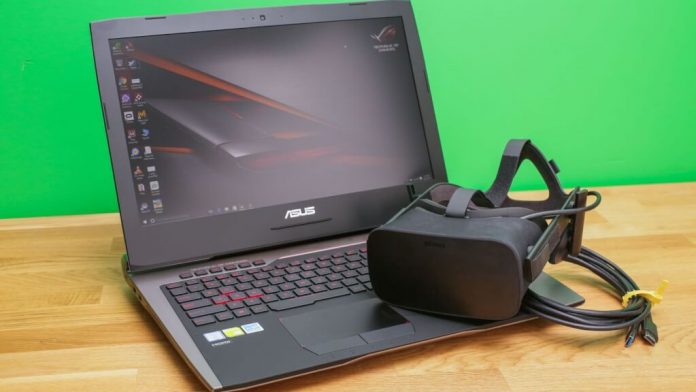Table of Contents
Buying VR hardware means buying a powerhouse gaming machine. Most of the VR headsets manufacturers state Nvidia GTX 1060 as minimum system requirements. It’s all about the graphics card, other components in gaming rig won’t be a bottleneck if you have GPU that can crunch at least 2K resolution in more than 80 FPS. The reason is in high-resolution displays in VR headset paired with the 80Hz refresh rate.
If you are seeking VR capable laptop, the good news is that there are a lot of options, especially after Intel launched 8th generation of Core processors couple a quarters ago and with Nvidia 9xx, 1xxx and now 2xxx generation of GPUs that can power your VR headset.
VR content can cause nausea and motion sickness if the hardware is not as good as it should be. Nevertheless, there are quite a few laptops on the market that can deliver smooth frame rates in VR without necessarily breaking the bank.
Our guide focused on devices that exceed minimum VR requirements because the plan is to play VR games the right way, without worrying about framerate.
What to look for in a VR ready laptop?
Looks and style are important in purchase decisions, but this time discard the thin gaming laptops and choose ones with an efficient cooling system with big wents. Intensive gaming could make your gaming laptop to throttle if not properly cooled.
CPU is important, but most modern four core processors will be sufficient. If you can choose, go with at least Intel Core i5- 8xxxx and AMD Ryzen 5 2xxxx.
Having an SSD as the main drive is essential to the system overall performance, and don’t settle for classic HDD in a gaming machine worth over $1000. As for the RAM, 8GB is minimum, but try to go with at least 12 GB.
Now we come to the GPUs, and that is where you can define whether a laptop is ready for VR content. Try to find laptops with GTX 1070, or RTX 2060 or higher. AMD was not that great in gaming laptops, the trend that is slowly changing. An alternative to Nvidia graphics cards for VR would be Radeon VII, or not so widespread AMD Radeon RX Vega 56 mobile.
You will also need to have DisplayPort 1.4 and USB Type-C ports on your gaming laptop.
The best VR ready laptops
Asus TUF505 (2019)
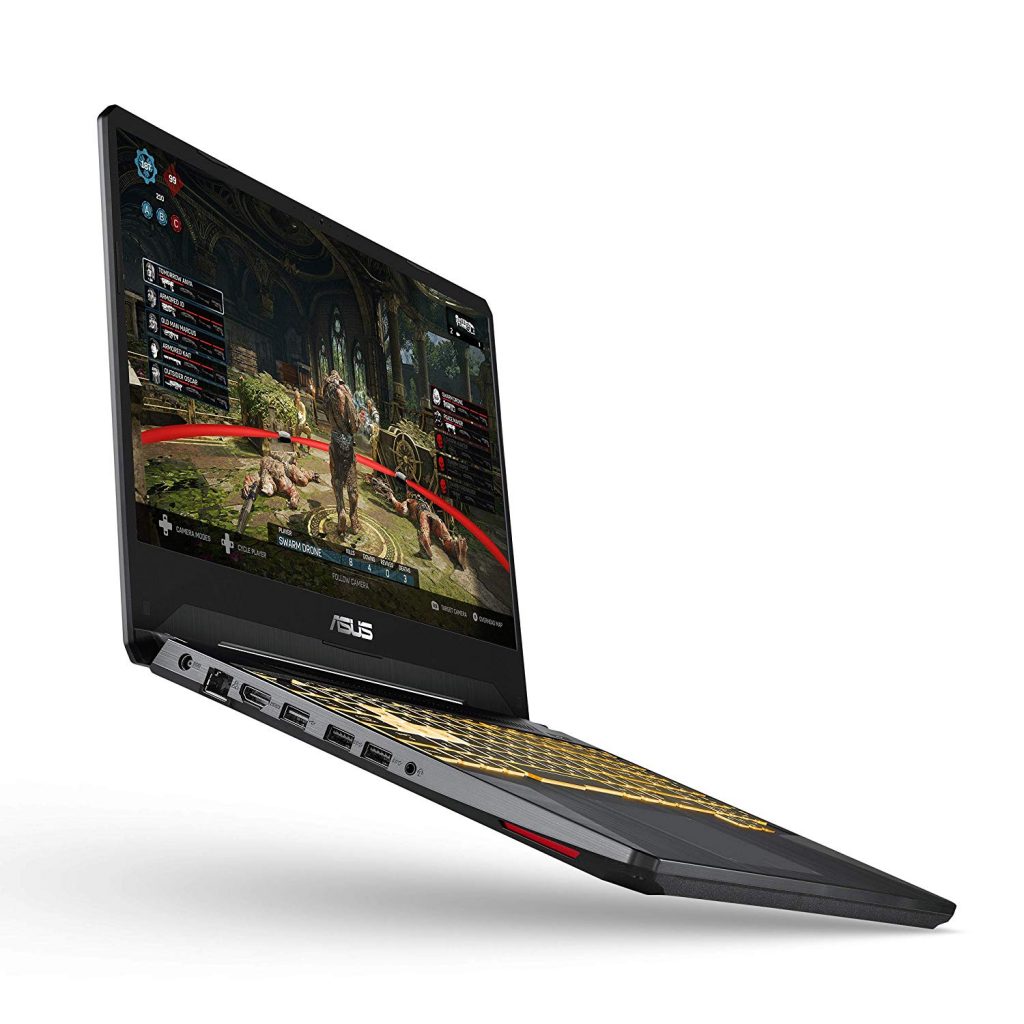
With the price, $100 above 1,000 new Asus TUF comes with plenty of great features packed in a rather thin case for a gaming laptop. It has RGB backlit keyboard and strategically placed red color to emphasize the gaming purpose. The case hasMIL-STD-810 military standard construction.
The screen is FHD IPS with very thin bezels. Asus calls that feature NanoEdge Display. It’s a great screen with a 120Hz refresh rate. Asus has a dual fan cooling system with anti-dust technology, durable keyboard with highlighted WASD keys, and dual-band 802.11ac Wi-Fi. Audio is also top notch with DRS Headphone technology with 7.1 channel support.
All these features are great, but the main VR related hardware is under the case. Asus TUF505 comes with Nvidia GeForce GTX 1660 Ti which is performance-wise around the same as GTX 1070. That means you will be able to play most VR games with decent framerates.
Along with the GTX 1660Ti, Asus gaming laptop has new AMD Ryzen 7 3750H quad-core CPU, SSD-HDD combo and plenty of RAM.
Specs:
Display size/type: 15.6’’/ IPS
Resolution: 1920×1080, 120 Hz
CPU: AMD Ryzen 7 3750H
GPU: Nvidia GeForce GTX 1660 Ti
Memory: 16 GB DDR4
Storage: 256 GB PCIe NVMe SSD+ 1TB HDD
Operating system: Windows 10 Home
Dimensions/Weight: 14.17 x 10.31 x 1.02 in/4.85 lbs
Pros:
- Build quality
- Hardware
- IPS 120Hz Screen
- Price
Cons:
- Entry level VR GPU
OMEN by HP 15-dc0045nr (2018)
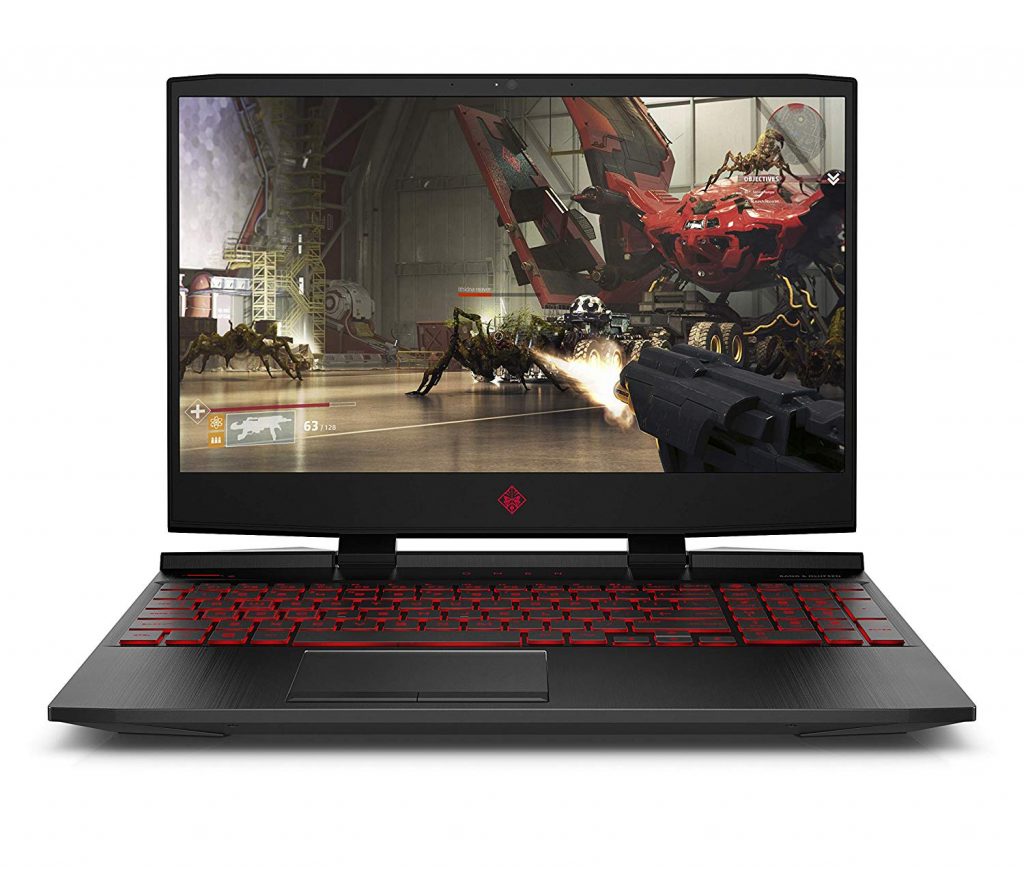
Hardware packed OMEN laptop screams gaming with its design. Big cooling vents on the back side and aggressive black and red color dominate the case. The laptop has a quality keyboard with red backlit, full-size directional arrow keys, and separated WASD keys.
OMEN comes with 15.6’’ 144 Hz screen so that you will have an edge in BattleRoyal and other online FPS games. There is a neat feature of single panel access to SSD, HDD, and Ram for an easy upgrade if and when needed.
But with this hardware, you won’t be needing an upgrade any time soon. This version of OMEN 15 comes with six-core Intel i7-8750H CPU and for VR more important Nvidia GeForce GTX 1070. This graphics card is above minimum system requirements for VR gaming and will provide satisfying VR experience paired with VR headsets. This laptop is packed with great hardware, and it has 32GB of RAM, which is more than you will need for gaming but can come in handy if you use OMEN for video production. Laptop also has big 512 GB SSD, which is decent enough storage space, not to think about additional drives, and we should mention that bigger SSD got better performance.
Specs:
Display size/type: 15.6’’
Resolution: 1920×1080, 144 Hz
CPU: Intel Core i7-8750H
GPU: Nvidia GeForce GTX 1070
Memory: 32 GB DDR4
Storage: 512 GB SSD
Operating system: Windows 10 Home
Dimensions/Weight: 10.35 x 14.17 x 1.02 in /5 lbs
Pros:
- Gaming design
- Hardware
- 144Hz Screen
- 512 GB SSD
Cons:
- The display is not IPS
Alienware M15
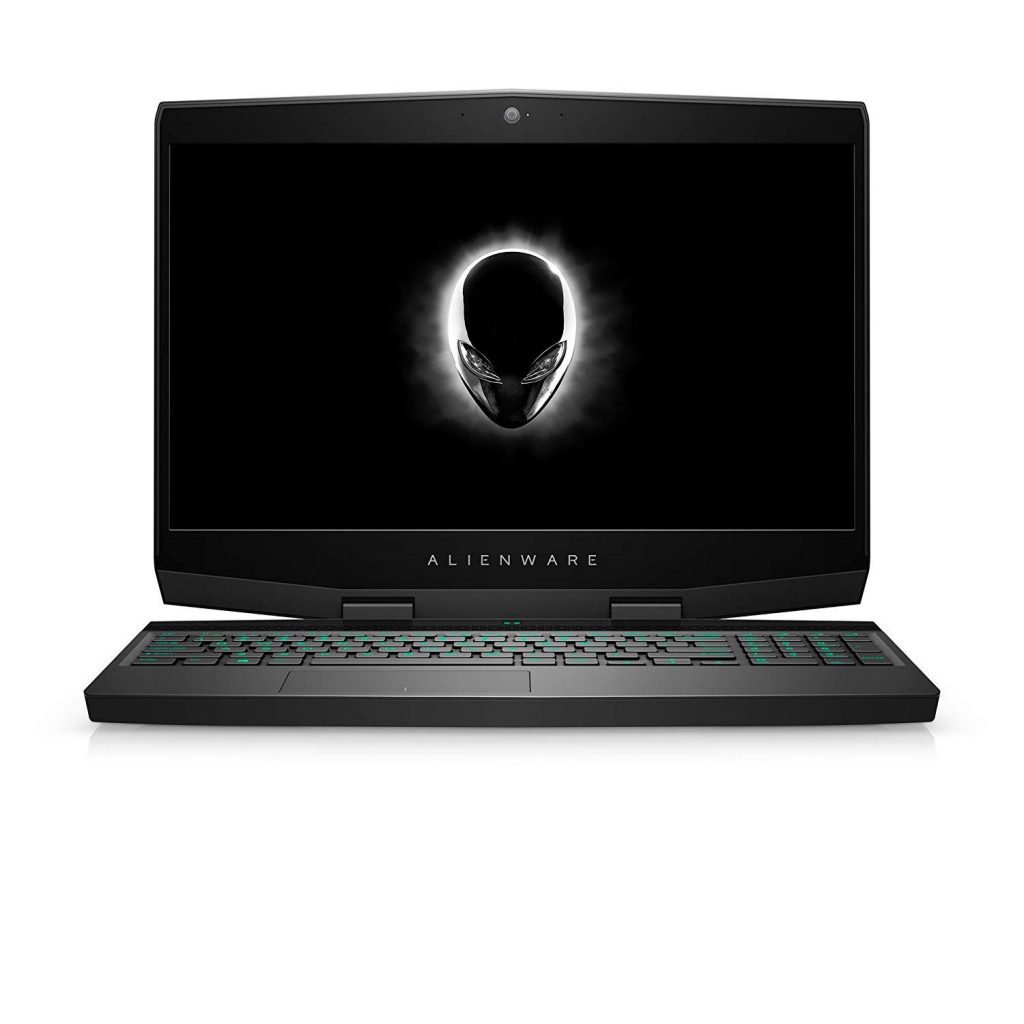
Probably the most famous name in the gaming laptop world, Alienware usually comes with a price that is not for everyone’s pocket. M15 is packed with features. The design is classic Alienware, magnesium alloy thick case with the famous logo on the hood. For M15, Alienware worked on the dimensions, and it is 5% thinner and 20% lighter than Alienware 13.
The FHD screen blends into the case seamlessly because of thin bezels. This beautiful IPS display comes with 144 Hz refresh rate. Alienware has a cool marketing name for its cooling system, and the Crya-Tech V2.0 has dual intake/dual-exhaust airflow design with high voltage fan.
That is what you don’t see, but on the surface, Alienware offers AlienFX keyboard with 1.4 mm key travel, six independent backlit RGB zones.
All these cool features wouldn’t mean a thing without proper hardware. Alienware M15 has big 512GB SSD and 16GB of RAM, which means that the system will be snappy and responsive. In combination with the 8th generation of Core i7 CPU, the system performance will be top-notch. As for the gaming and VR, relatively new Nvidia GeForce RTX 2060 will give you comfortable framerate both on FHD 144Hz laptop display and on an 80Hz 2K VR headset.
Specs:
Display size/type: 15.6’’
Resolution: 1920×1080, 144 Hz
CPU: Intel Core i7-8750H
GPU: Nvidia GeForce RTX 2060
Memory: 16 GB DDR4
Storage: 512 GB SSD
Operating system: Windows 10 Home
Dimensions/Weight: 18.2 x 16.5 x 4.8 in /4.78 lbs
Pros:
- Brand
- Design
- Performance
- 512GB SSD
Cons:
- You are paying for the brand
Lenovo Legion Y740 81HH0037US
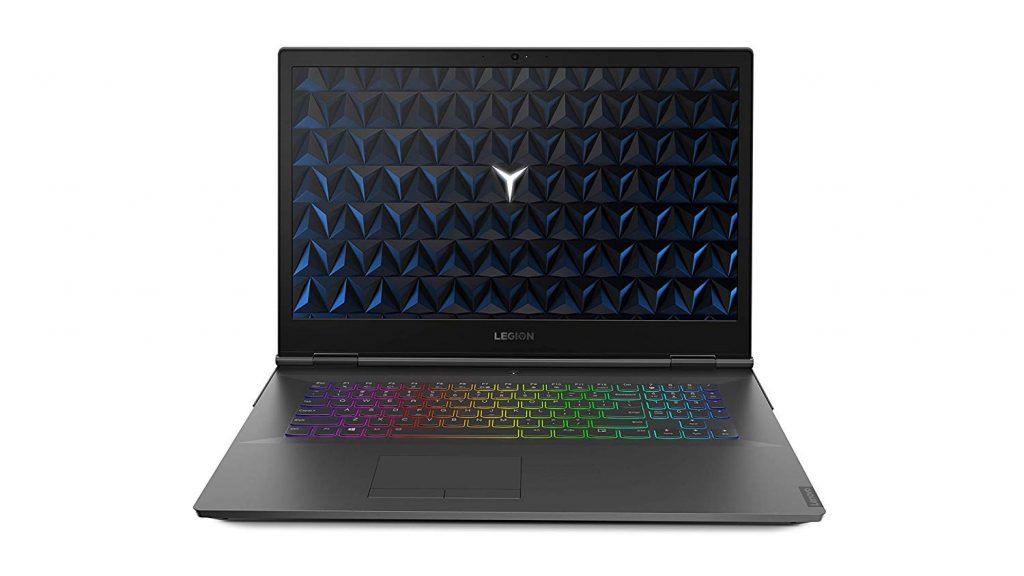
Legion is a Lenovo brand of gaming laptops; this model is a beast. You can’t get more graphics performance than with RTX 2080, and this is your best bet if you want to be sure VR content will glide through you headset broad field of view.
Legion also has aggressive gaming design with much of the back side dedicated to the cooling of the powerful components inside. Lenovo has Coldfront cooling system with a dual-channel thermal system with separated CPU and GPU cooling, with four thermal vents for improved airflow.
Legion Y740 IPS Display has FHD resolution, and it comes with G-Sync support and 144 Hz refresh rate. Lenovo also went for slim bezels so the rather thin and light construction. Design is even more impressive If we look at the built-in hardware.
The star of the show and absolutely VR ready GPU is Nvidia GeForce RTX 2080, one of the most powerful graphics card out there. It will have no problem crunching AAA games in 144 frames, and VR Steam library will present no trouble.
To back RTX 2080, Lenovo added Intel Core i7-8750H, 16GB of RAM and 512GB SSD. The performance of the system will be very responsive, fast, and you could use this gaming monster for workstation purposes also.
Specs:
Display size/type: 17.3’’, IPS
Resolution: 1920×1080, G-Sync 144 Hz
CPU: Intel Core i7-8750H
GPU: Nvidia GeForce RTX 2080
Memory: 16 GB DDR4
Storage: 512 GB SSD
Operating system: Windows 10 Home
Dimensions/Weight: 16.24 x 12 x 0.91 in /6.17 lbs
Pros:
- Top GPU for VR
- Hardware 512GB SSD and 16GB or RAM combo
- Performance
- G-Sync 144 Hz monitor
Cons:
- Price
Razer Blade 15
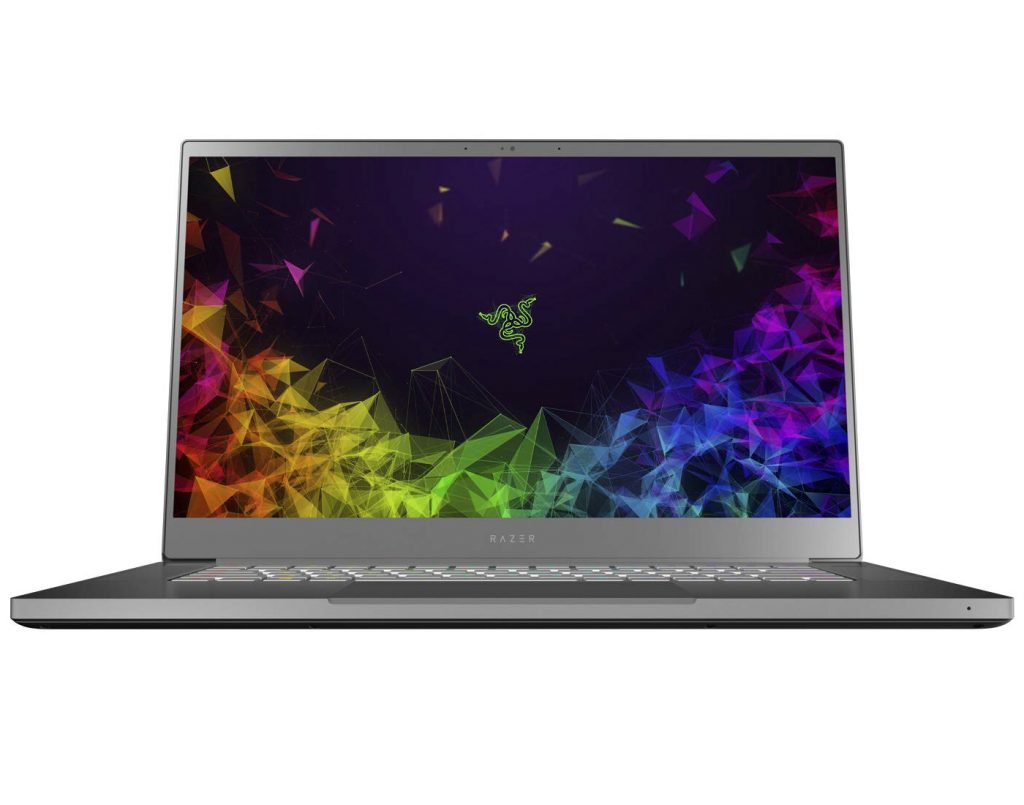
Razer is a gaming brand with products ranging from a gaming mouse, keyboard, and headphones to specialized gaming laptops.
Small form factor, thin design, and the sturdy aluminum case make this Blade 15 a stylish and somewhat different than other gaming laptops. The thin design is usually not good for thermal properties, but Razer integrated dual custom fans, server grade thermal materials and 68 fins for maximal heat dissipation.
Thin bezel screen features FHD display with a 144 Hz refresh rate. Razer offers Synapse 3 for customizing the lighting. Backlit keyboard and glass touchpad is excellent quality.
Under the fancy case, Razer packed six-core Intel i7-8750H CPU, great 16GB of RAM and 512GB SSD combo for excellent user experience. A most important component for VR is a graphics card, and Blade 15 comes with Nvidia GeForce GTX 1070 May Q with 8GB GDDR5 memory.
Specs:
Display size/type: 15.6’’
Resolution: 1920×1080, 144 Hz
CPU: Intel Core i7-8750H
GPU: Nvidia GeForce GTX 1070 May Q
Memory: 16 GB DDR4
Storage: 512 GB SSD
Operating system: Windows 10
Dimensions/Weight: 9.25 x 13.98 x 0.68 in /4.63 lbs
Pros:
- Performance
- 144Hz screen
- 512GB SSD
Cons:
- Price
- Thin design
ASUS ROG Zephyrus GX501VI-XS74
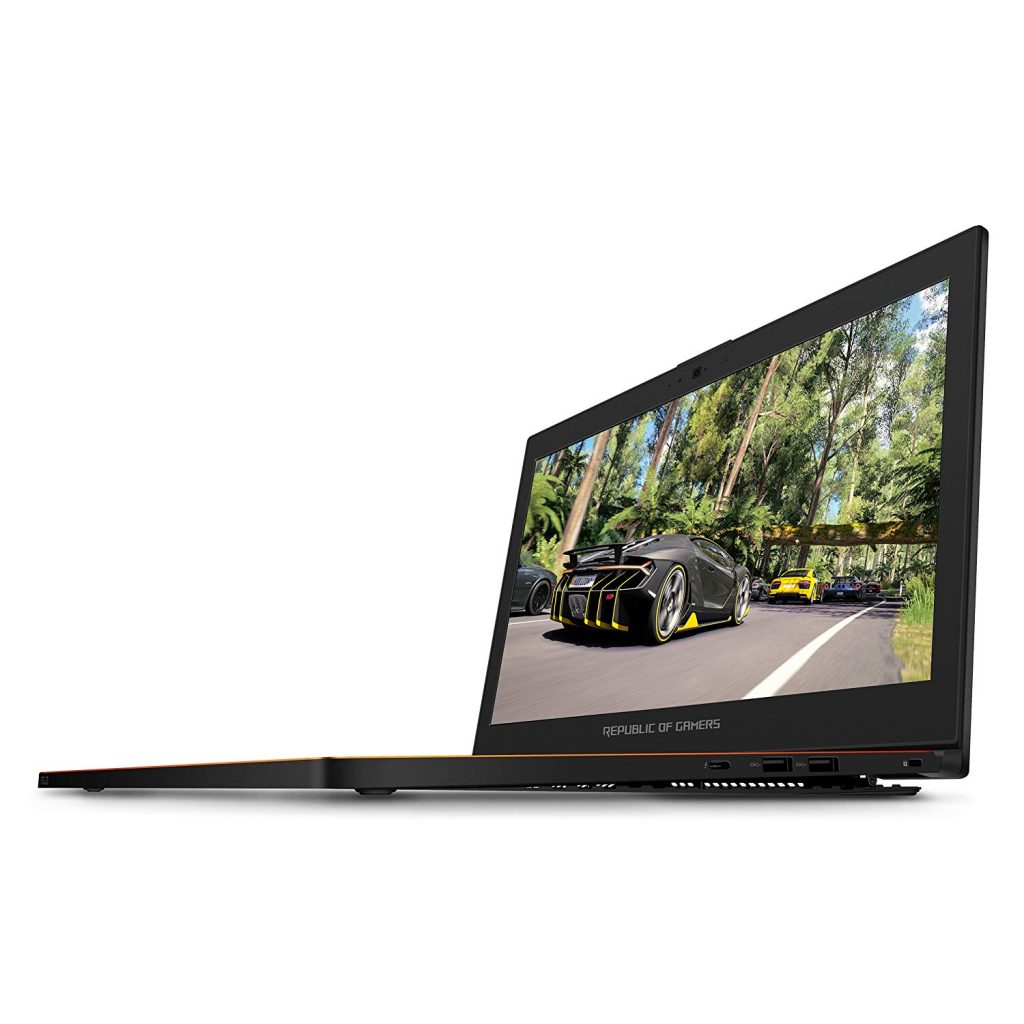
Stylish design and smaller dimensions are among top selling points for ASUS ROG Zephyrus. Aluminum body with sturdy and sleek casing shows the latest trend in gaming laptops, and that is a design that leans more towards business and lifestyle laptops. Gaming elements are still here though with RGB backlit keyboard and RGB logo on the back.
With the keyboard, you can adjust backlit according to the game type with separately QWER and WASD clusters. The keyboard has a 1.4 mm travel and anti-ghosting technology.
The cooling system is essential in a thin gaming laptop, and Zepyris have Active Aerodynamic Systems. When the laptop is opened, part of the bottom flexes and that creates 20% more space for air flow.
The 15.6’’ display has a refresh rate of 120Hz and G-Sync support, great viewing angles and it covers 100% of sRGB gamut. The screen fits perfectly into the fancy design with thin bezels.
The performance will be excellent with a combination of older, but potent four-core Core i7-7700HQ and for user-experience pivotal 16GB of RAM and 512GB SSD. Zephyrus comes with one of the top graphics cards, Nvidia GTX 1080. GPU will be more than enough to play VR content in above 90 FPS.
Specs:
Display size/type: 15.6’’
Resolution: 1920×1080, 120Hz
CPU: Intel Core i7-7700HQ
GPU: Nvidia GeForce GTX 1080 May Q
Memory: 16 GB DDR4
Storage: 512 GB SSD
Operating system: Windows 10
Dimensions/Weight: 14.9 x 10.3 x 0.7 in /4.9 lbs
Pros:
- Great design
- Older, but very strong VR ready graphics cards
- 120Hz screen
Cons:
- To thin for a gaming laptop
MSI GS65 Stealth
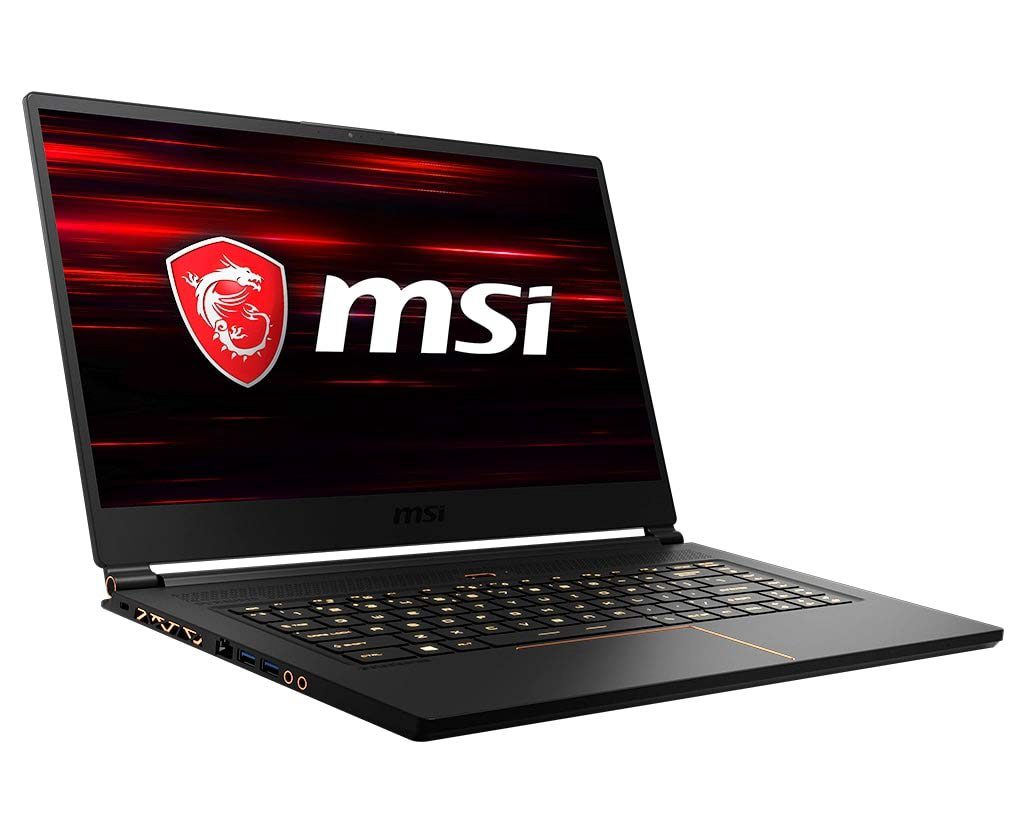
MSI produced another stylish and thin gaming laptop that is packed with top hardware. MSI GS65 Stealth looks almost like ultrabook with a thin profile, sturdy metal construction and with just subtle touches that indicate this is a gaming laptop.
Taking care of the cooling is challenging in such a thin product. MSI has Cooler Boost Trinity with three fans and four heatpipes for top performance with VR content.
RGB backlit keyboard has customization per key. The display has support for 144Hz refresh rate and comes with thin bezel design to complement the overall appeal of the device.
Stealth has a great performance with a combination of six-core i7-8750H, 16GB of RA, and 256GB SSD. The main VR character is the graphics card. MSI offers Nvidia GeForce GTX 1070 in this package, and it is enough for excellent FHD gaming, and it is a card that is just above minimum system requirements for VR.
Specs:
Display size/type: 15.6’’
Resolution: 1920×1080, 144Hz
CPU: Intel Core i7-8750H
GPU: Nvidia GeForce GTX 1070
Memory: 16 GB DDR4
Storage: 256 GB SSD
Operating system: Windows 10 Home
Dimensions/Weight: 9.75 x 14.08 x 0.69 in /4.14 lbs
Pros:
- Design
- Performance
- VR ready GPU
Cons:
- Price
Bottom line
You could find decent gaming laptop under $1000, but for VR ready devices the range is slightly higher. Powerhouse gaming machines with Nvidia RTX 2080 graphics card come with a much higher price. Playing VR games is an expensive endeavor, but if you already have VR headset with all equipment, it doesn’t have to break the bank. Generally, you will get more out of gaming desktop rig, but mobility with approximate power have the edge over buying big desktop PC.
